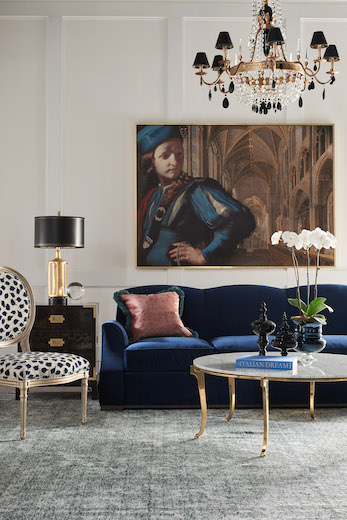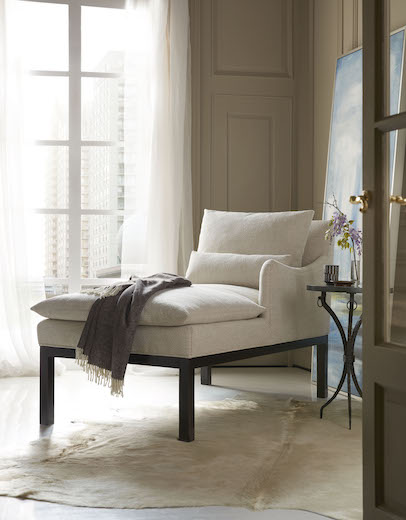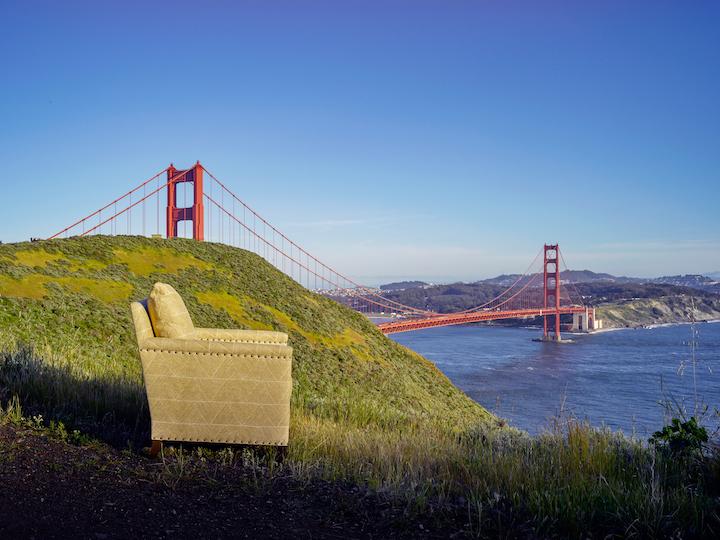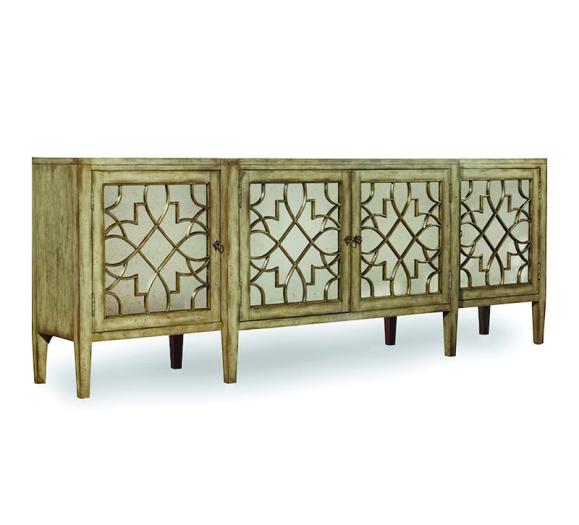Luxury now is less about extravagance than it is personalized experience, performance, sustainability and, perhaps, social media.
Most important: “Everybody these days wants to design their own furniture and make it their own,” asserts Bondi Coley, Marketing Director at Lee Industries, a maker of handcrafted, American-made upholstered furniture celebrating its 50th anniversary this year. “They don’t want the look associated with a certain specialty retailer down the street; they want to choose their own frames and fabrics, welting and tucks, all the bells and whistles to customize their own piece. And designers are really using a lot of fine fabrics and interesting trims, those embellishments that make it their own.”
“I like to tell clients, ‘Spend the money where it counts,’” says interior designer Elizabeth Gullett, Principal, Elizabeth Gullett Interior Design in Memphis, TN. “One of my key roles is helping clients decide where to spend, and I encourage them to do so where they’ll feel it, and high-end upholstery is a super-important part of that.”
“Luxury is the ability to have anything you want,” says Brandon Blell, Vice President of Sales and Marketing at Stanford Furniture, an upholstery manufacturing company committed to hand craftsmanship and luxurious comfort. “It’s about the quality inside, the comfort level and a stunning look that nobody else will have.”
Look (and Feel) What We Can Do

Of course, as desires for truly customized looks increase, so do the very real possibilities of making costly mistakes.
“Instagram and online shopping are the biggest disruptors in the industry,” says Elizabeth McGann, Director of Marketing and Client Relations at Lillian August, a leading Connecticut-based retailer with a laser focus on the design trade. “It used to be there was a status associated with hiring an interior designer. In this Instagram culture, there’s status in being a creative visionary that can do it yourself, but it’s not as easy as people think. It’s a very challenging thing to design a home; there are so many moving parts that need to be proactively addressed. That’s not the story that our culture tells people, however. I think there really needs to be a lot of advocacy for design professionals, so that people feel okay about having help. You can still share and curate your life while working with a designer; you’re just not going to make those expensive mistakes.”
While McGann acknowledges “an uptick in online orders from random places because someone was searching for a specific thing and found us,” she adds that Lillian August, which has been around for 30 years, has developed great trust within the trade community. “That’s so important, because it’s harder to get that feeling from an online shopping experience. Also, if you’re investing in luxury upholstery, it’s about the way that it feels when you sit on it, when you touch it. It’s impossible to get that from a computer. You just can’t.”
The key to success in the better-end upholstered furniture business, McGann believes, “is offering a really wonderful shopping experience that is visually stimulating, interesting and inspiring. You need to do more now to lure people out of their homes, to get into their cars and go somewhere, especially when they can sit at their computer scrolling.”
Inside the chic and airy Lillian August stores, best described as a one-stop resource for unique and luxurious home furnishings, the focus in on “creating a friction-less experience. We have what we call our Project Area, which is a large, dedicated space with lots of tables where designers can work. That’s where all our fabric samples are, and we have a dedicated trade team with multiple people there to support the designers. There’s a café, so you can eat, have coffee and stay there all day. It’s designed to be a beautiful showroom experience that really supports our trade clientele, but also our in-house designers who have a great place to work with clients.”
The Insta-Factor

In some ways, Instagram has been a boon to the luxury sector in that “it’s an amazing way to share beautiful imagery and get inspired and connected with brands and designers,” McGann describes. “For so many designers now, their only investment in marketing is the time they spend with Instagram. And all the emphasis on personal expression means that people want to make more of a statement. For a long time, everything was gray, monochromatic and safe. But people now are feeling a little bit more adventurous. They’re thinking about how their room will look photographed for their Instagram feed.”
As fall is typically the big push at retail, “we’re highlighting brands that we work with and spotlighting their specific points of view, supporting them through Instagram posts, emails and on our website, where brands like Timothy Oulton and Sonder Living have their own designated spaces,” McGann says. “So much of this is a constant quest to get more content and if you can partner with brands like these that have beautiful imagery, it helps to feed the beast. We’re also doing that with our own signature line — Lillian August for Hickory White — giving it more real estate in every sense of the word.”
“The best designer interiors have custom elements and personal details that set them apart,” August says. “The collection boasts a myriad of fine fabrics and Old-World forms combined with urban chic styling. These layers are meant to feel collected over time with archival references that tell the story of a home.”
Bold, saturated color and fabulous prints being more “Insta”-friendly than, say plain neutrals, it’s surely no surprise that these will be making a comeback both at High Point Market and in Lillian August stores this fall, where the European couture high fashion that inspired the designer’s spring season is just now beginning to hit the floors. Designed to make people stop scrolling in their feeds, the Modern Living upholstery collection, for example, presents versatile performance fabrics — “huge in an area like Connecticut where there are so many young families who don’t want to invest in something their kids are going to destroy,” — lush velvets, and Italian-style trophy fabrics with the designer’s signature color confidence.







